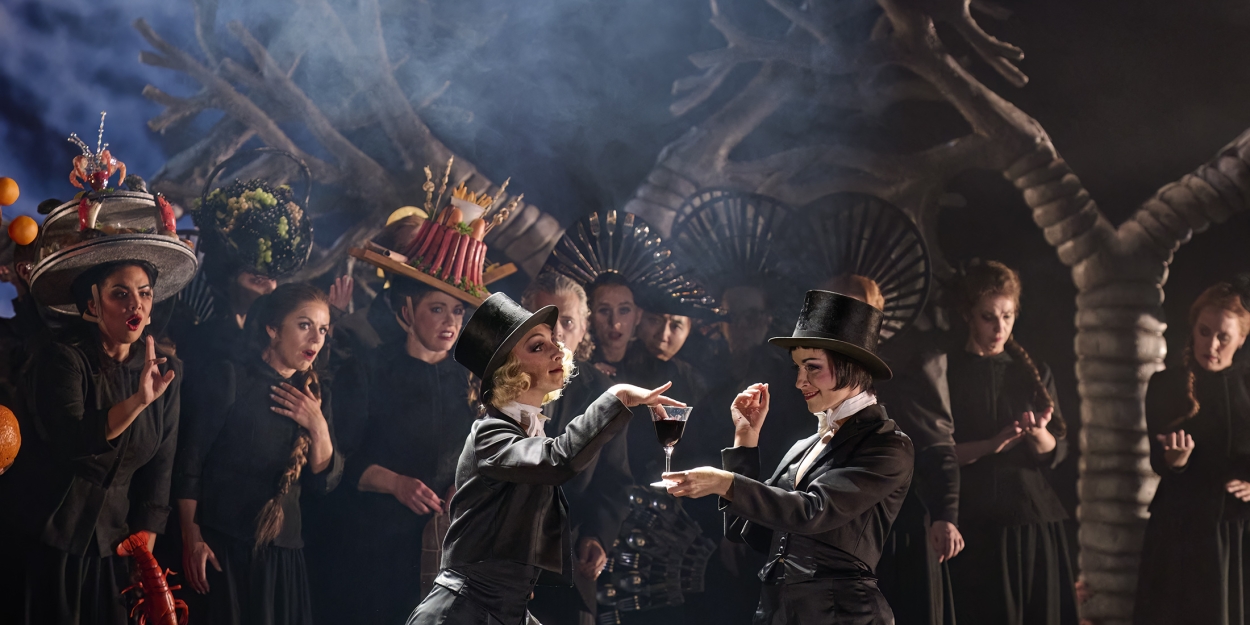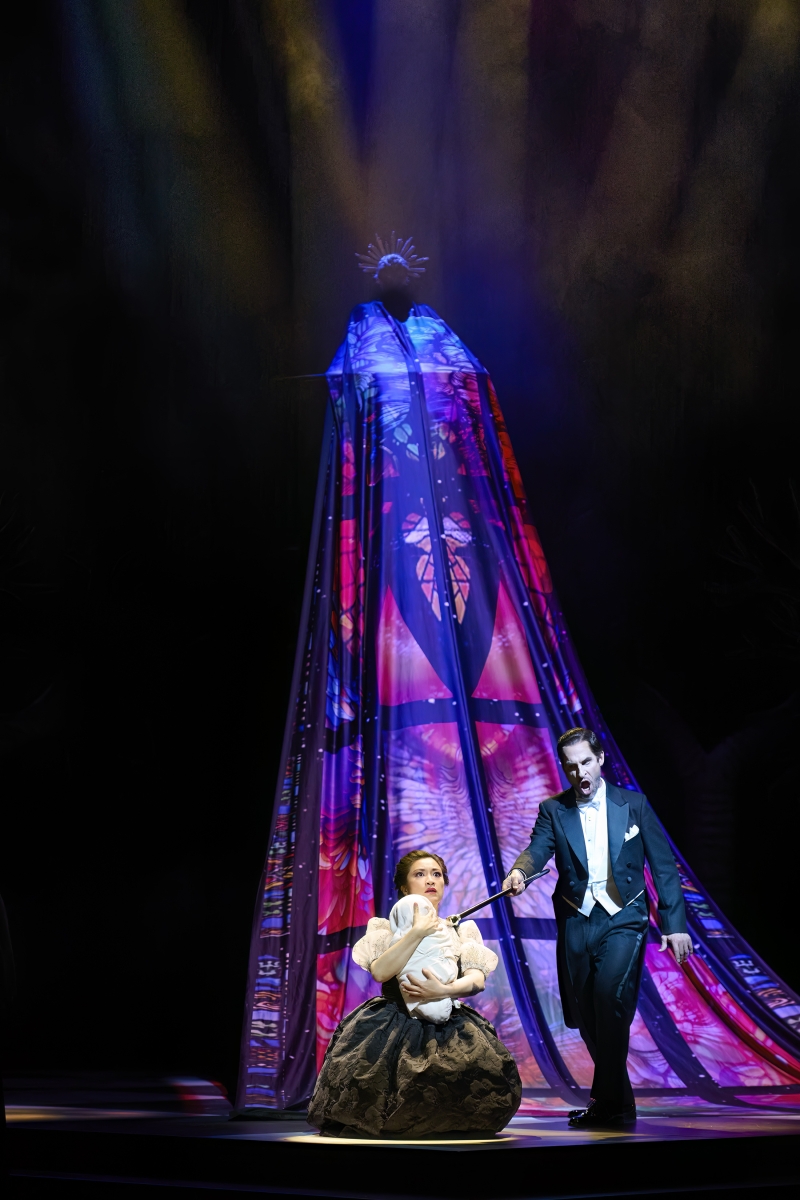Review: FAUST at Four Seasons Centre For The Performing Arts
Gounod's interpretation of the timeless tale, produced by Canadian Opera Company


The imposing deep royal blue satin curtain stayed down during the entirety of the overture of Gounod’s Faust presented by the Canadian Opera Company, which opened on October 11. This was a stark contrast to the modern convention where the storytelling often begins during the overture, with the performers acting and interacting silently.
Amy Lane’s directorial choice to leave the curtain down was a subtle and highly effective dramatic technique that allowed the music of the overture to paint the themes and conflicts of the story from beginning to end. Under the direction of maestro Johannes Debus, the orchestra had the strongest sense of ensemble I have ever heard from a group of musicians this size. The orchestra truly seemed to function as a unified organism, creating the illusion of a single, highly textured instrument.
The thematic exposition of the overture reveals this opera to be one of the most stunning examples of the music of this era. Weeping violin melodies breathe life into the story's timeless themes of the irresistible ecstasy of lust and love. Meanwhile, the grittier lower string instruments paired with the ominous rumble of timpanis were used to elucidate the story’s darker themes on the destructive and damning force of unbridled vice. Throughout the opera brass, clarinet, and flute are all spotlighted in very clear service of the storytelling, without ever disrupting the illusion of unity.
Each singer had a deft grasp of their character’s inner world and motivations, combined with a voice that was born to play that role. Long Long has a warm lyric tenor voice that is bright, but not quite brassy, with fine, yet somehow soothing edge to it. In the role of Faust this rather unique combination of elements conveyed a titular character with strong, but highly controlled libertine impulses, impulses that are very much at war with a sensitive but guarded heart. His sustained high notes during Salut demeure chaste et pure were radiant.
Guanqun Yu soprano voice also has a seemingly impossible combination of elements. She has a fast, light sweet vibrato like the fluttering wings of a bird, surrounding a core that is robust like the trunk of a tree. This was perfectly suited to the character of Marguerite, who is independent, yet vulnerable and principled, yet naive. This deceptively strong core to an angelically sweet voice was most evident during her performance of Ah je ris de me voir si belle where her high notes soared like a bird and you could feel her low notes in your own chest. Yu’s realization of this timeless character was impeccably complex and relatable. At the intermission, my companion and I agreed that we had both been Marguerite, getting lured into hell by a charismatic seducer like Faust.
Kyle Ketelsen was dashing and winsome in the role of Mephistopheles, bringing much of the same panache that Tom Ellis brings to a similar character in Lucifer. Vocally, his bass-baritone has a thick, red wine plumminess to it, with a certain jocular bounce that conveys the irresistible, sinister playfulness of the devil. Accompanied by his flexible and leggy hench demonesses (dancers Sierra Richardson and Tina Desroches) it was easy to see how he could lead a reserved, ethicist into temptation. His aria Le veau d'or est toujours debout! wherein he puts all of the villagers under his trance is the most fun number in the show and really allows him to lean into the bold and brassy qualities of his voice.
The only challenge for me was that the staging left the performers and Gounod’s music to do the heavy lifting in terms of explaining why temptation is tempting. For Faust to sell, we need to buy into why a person who’s led an orderly, conventional and appropriate life would be motivated to sell their soul to Satan for a chance to live it up as a young man. In this production, the set and background changed very little throughout the show. The symbolism was clear and compelling, but monotonous by the end. The colour scheme was intentionally monochrome, with colourful accents, like red plumes on the soldiers' helmets, and a hunter-green velvet jacket for a rejuvenated Faust. Even choreography meant to represent licentiousness was stylized and restrained. The conservativism that was highly effective during the overture fell a little flat by the end of the piece. Evil just didn’t look fun enough to be worth selling your soul. The moral of the story is that evil is not worth selling your soul, but it needs to look worth it at the outset for the premise to track. I would have liked to see livelier sets and costumes and the company truly revelling in the forbidden delights of debauchery.
This production is set in the 1930s, and the timeless nature of the story of Faust rings strong and clear. We have all made choices that felt good at the time that we knew probably weren’t good for us. It’s easy to understand why this was Gounod’s most successful opera. This production is a welcome addition to COC’s 24-25 seasons and a great night out for lovers of blurring the lines between fantasy and reality.
Upcoming Performances:
- October 24 at 7:30 PM
- October 26 at 7:30 PM
- November 2 at 4:30 PM
For tickets, call the box office at 1-800-250-4653 or click the link below.
Reader Reviews
Videos

